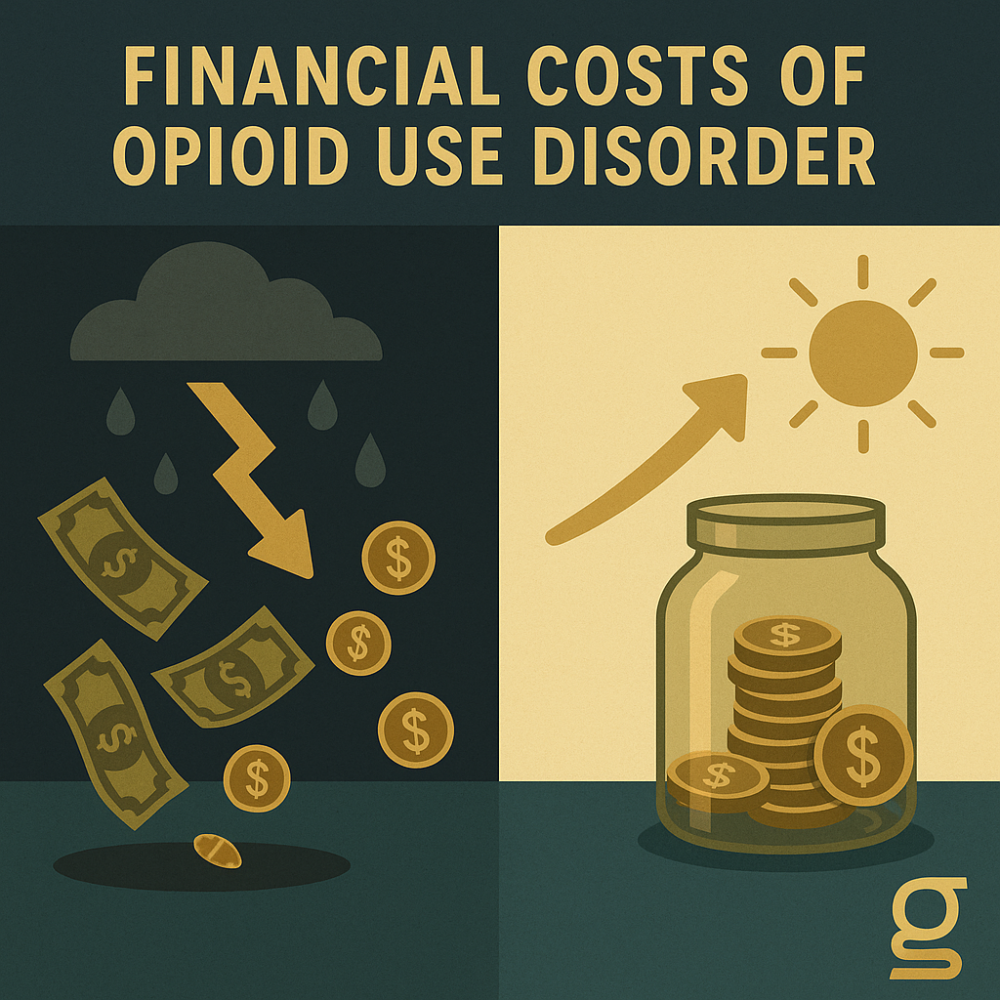The Dangers of Combining Cocaine & Opioids
Risks of Mixing Cocaine and Hydrocodone (Vicodin®), Oxycodone (OxyContin®, Percocet®), Oxymorphone (Opana®), Morphine (Kadian®, Avinza®), Codeine, Fentanyl, Hydromorphone, Tapentadol, Methadone, and Heroin.
At Gallus Medical Detox, we understand the complex world of drug addiction, particularly when it involves substances like cocaine and opioids. Before we can delve into the solutions we offer, it’s crucial to understand what these substances are and why their combination is lethal.
Understanding Cocaine
Cocaine, a powerful stimulant drug derived from the coca plant, has a complex impact on the human body and mind. Often referred to as ‘coke’, ‘blow,’ or ‘snow,’ it comes in two primary forms: a powdered form that is typically snorted and crack cocaine, which is usually smoked.
When cocaine enters the body, it quickly travels to the brain, where it influences the brain’s reward system by inhibiting the reuptake of dopamine, a neurotransmitter associated with pleasure and reward. This leads to an intense feeling of euphoria, heightened energy, and increased mental alertness. These effects, however, are short-lived, leading to a “crash” that often involves feelings of fatigue, depression, and a strong craving for more of the drug.
While the immediate effects might seem appealing to users, the risks associated with cocaine use are severe. The drug can raise heart rate and blood pressure, increasing the risk of heart attacks, stroke, and even sudden death. It can also cause respiratory problems, gastrointestinal complications, and neurological issues such as seizures and strokes. Cocaine use also affects the brain’s structure and function, leading to cognitive deficits and an increased risk of mental health disorders.
Furthermore, cocaine’s highly addictive nature makes it particularly dangerous. The intense but fleeting high often leads users to take more and more of the drug, creating a cycle of binging and crashing. This pattern can quickly lead to addiction, causing individuals to continue using the drug despite the damaging consequences on their lives.
Understanding Opioids
Opioids constitute a broad group of drugs that include both legal prescription medications such as oxycodone (OxyContin), hydrocodone (Vicodin), and morphine, as well as illicit substances like heroin. Synthetic opioids, such as fentanyl, are also part of this group and are notably potent and dangerous. All opioids interact with specific receptors in the brain and body to produce pain-relieving and euphoric effects.
When used as directed by a medical professional, opioids can be highly effective in managing acute or chronic pain. However, their misuse has led to a widespread crisis of addiction and overdose deaths. This stems from the drugs’ highly addictive nature and their ability to create a sense of profound relaxation and well-being, which can lead users to seek out these feelings repeatedly.
The brain’s reward system plays a significant role in opioid addiction. Like cocaine, opioids increase the amount of dopamine in the brain, reinforcing the behavior of drug use. However, with continued use, the brain adapts to the presence of the drug, leading to tolerance and the need for increasingly higher doses to achieve the same effects. This escalation can quickly lead to physical dependence and addiction.
The dangers of opioids extend beyond their addictive potential. Overdose, often resulting in respiratory depression and death, is a severe risk. Chronic use can lead to a host of physical problems, including constipation, liver damage, and brain damage due to hypoxia resulting from respiratory depression.
Psychologically, opioids can contribute to the development of mental health disorders, including depression and anxiety. Furthermore, withdrawal from opioids can be incredibly uncomfortable, manifesting in symptoms such as restlessness, muscle and bone pain, insomnia, diarrhea, vomiting, and cold flashes.
The Deadly Consequences of Combining Cocaine and Opioids
The practice of combining cocaine and opioids—often termed “speedballing”—is not only dangerous but also potentially lethal. This deadly combination can lead to severe health implications and a significantly increased risk of overdose and death.
Immediate Health Risks
The simultaneous use of cocaine, a stimulant, and opioids, depressants, can result in a hazardous physiological reaction. The effects of cocaine can mask the symptoms of an opioid overdose, such as respiratory depression, leading users to consume higher amounts than their bodies can handle. This can result in a range of immediate health risks, such as heart failure, seizures, and respiratory arrest, which can be fatal.
Moreover, because cocaine’s effects wear off more quickly than those of opioids, the depressant effects of opioids can become pronounced as the stimulant effects of cocaine fade. This can lead to an unexpected overdose, with symptoms including severe respiratory depression, unconsciousness, and risk of death.
Long-term Consequences
Chronic use of cocaine and opioids in combination can lead to cumulative damage to the body. The cardiovascular system can be severely affected, leading to an increased risk of heart attack, stroke, and heart disease. The respiratory system can also be compromised, resulting in respiratory distress or failure. Furthermore, liver and kidney damage can occur due to the body’s constant effort to process and eliminate these toxic substances.
The strain on mental health is also significant. The constant highs and lows associated with speedballing can exacerbate underlying mental health issues or lead to new ones, such as anxiety disorders, depression, and bipolar disorder.
Psychological Implications
The combination of cocaine and opioids can have a profound effect on a person’s mental health. The alternating stimulation and depression of the central nervous system can lead to mood instability, increased risk of psychosis, and severe depression during the comedown phases.
This can lead to a vicious cycle of using more drugs to combat these negative feelings.
Moreover, addiction to both substances can significantly impact an individual’s life, leading to impaired relationships, loss of employment, financial problems, and legal issues.
At Gallus Medical Detox, we recognize the extreme dangers and complexity of treating combined cocaine and opioid addiction. Our experienced team of medical professionals utilizes evidence-based, individualized treatment approaches to guide patients through the process of detoxification and recovery. We believe that with the right support and treatment, recovery from polydrug addiction is possible.
Specific Interactions Between Cocaine and Opioids
Cocaine’s interaction with various opioids can lead to unique and often dangerous effects. The potential risks associated with combining cocaine with the following opioids are discussed below:
Risks of Combining Cocaine and Hydrocodone (Vicodin®)
Hydrocodone, a semi-synthetic opioid, is often prescribed for moderate to severe pain. When combined with cocaine, a stimulant, the two substances can create a heightened sense of euphoria while masking each other’s effects. This combination can lead to cardiovascular instability, including irregular heart rhythms, high blood pressure, and increased strain on the heart. This strain can potentially lead to heart attack or stroke. The risk of an overdose is also significantly increased due to the inability to accurately gauge the effects of each drug when used simultaneously.
Risks of Combining Cocaine and Oxycodone (OxyContin®, Percocet®)
Oxycodone is a potent opioid used to manage severe pain. Its depressant effects can be masked by the simultaneous use of cocaine, leading users to consume larger doses than intended. This can result in severe respiratory depression, which may be fatal. There’s also a greater risk of heart-related complications due to the stimulant effects of cocaine. The combination can also increase the risk of severe mental health issues, such as psychosis, anxiety, and depression.
Risks of Combining Cocaine and Oxymorphone (Opana®)
Oxymorphone, a highly potent painkiller, when combined with cocaine, can result in an extremely high risk of overdose due to the profound respiratory depression it causes. The stimulating effects of cocaine may encourage higher doses of oxymorphone than the body can safely handle, potentially leading to an overdose. This combination may also induce seizures, loss of consciousness, and even death.
Risks of Combining Cocaine and Morphine (Kadian®, Avinza®)
Morphine, an opioid analgesic, is often used in the management of severe pain. When combined with cocaine, the risks are significantly increased. The stimulating effects of cocaine may lead users to underestimate the effects of morphine, possibly resulting in an overdose. Respiratory depression, cardiovascular complications, and other severe health effects can occur.
Risks of Combining Cocaine and Codeine
Codeine, a milder opioid, is often prescribed for moderate pain and cough relief. However, when combined with cocaine, the effects can be dangerous. The combination can lead to respiratory distress, heart attack, stroke, and potential overdose. There’s also an increased risk of developing mental health disorders and a high chance of developing an addiction to both substances.
Risks of Combining Cocaine and Fentanyl
Fentanyl is one of the most potent synthetic opioids available, often prescribed for severe pain management. It’s 50 to 100 times more potent than morphine, so even a small amount can be lethal, particularly when combined with cocaine. The stimulating effects of cocaine can mask fentanyl’s depressant effects, leading to accidental overdose. This combination can cause severe respiratory depression, potentially resulting in death.
Risks of Combining Cocaine and Hydromorphone
Hydromorphone is a potent opioid analgesic used for managing severe pain. Combining it with cocaine significantly increases the risk of respiratory failure due to the depressant effect of the opioid. Accidental overdose is a significant risk with this combination. Additionally, this combination can lead to an increased risk of mental health issues and addiction.
Risks of Combining Cocaine and Tapentadol
Tapentadol is a centrally-acting opioid analgesic used to treat moderate to severe pain. When combined with cocaine, it poses significant health risks. There’s a higher chance of seizures due to the stimulant effects of cocaine. Respiratory depression, a common side effect of opioids, can be severe and life-threatening.
Risks of Combining Cocaine and Methadone
Methadone is often used as a substitute drug in the treatment of heroin addiction. It’s an opioid itself, and when combined with cocaine, can lead to serious health risks such as severe respiratory depression, heart problems, and an increased risk of overdose. The risk of developing a dual addiction to methadone and cocaine is also higher.
Risks of Combining Cocaine and Heroin
Heroin, an illegal and highly addictive opioid, poses severe risks when combined with cocaine. Known as “speedballing,” this deadly combination can cause rapid heart rate, high blood pressure, extreme anxiety, and severe respiratory depression. This can lead to heart attack, stroke, coma, and even death.
At Gallus Medical Detox, we understand the complexity and severity of treating combined cocaine and opioid addiction. Our highly trained and experienced staff are prepared to provide personalized, compassionate care to help patients through the detox process. We strongly encourage anyone struggling with substance abuse to reach out to us. You’re not alone in this journey.
Gallus Medical Detox Can Help
In the world of substance abuse and addiction, few combinations are as deadly as that of cocaine and opioids. The risk of physical harm, mental health disorders, and fatal overdose is significantly higher when these two powerful substances are used in tandem. Understanding the risks associated with their combined use is crucial in preventing life-threatening situations and encouraging those struggling to seek help.
It’s important to remember that addiction is not a sign of weakness but a complex health issue that requires professional help to overcome. At Gallus Medical Detox, we specialize in providing medically-supervised detox for drugs and alcohol, including treatments for individuals battling with the consequences of combining cocaine and opioids. Our team of professionals is ready and equipped to provide the necessary support and tools to those ready to embark on the road to recovery.
We urge anyone struggling with an addiction to cocaine, opioids, or both to reach out to us. Similarly, if you know a loved one who is battling addiction, encourage them to seek help immediately. It’s never too late to make a change and take steps toward a healthier and more fulfilling life. At Gallus Medical Detox, we’re here to help turn the tide on addiction and guide you or your loved one through the journey to recovery. You’re not alone in this fight. Reach out today, and let us help you reclaim your life.
FAQs
Can combining cocaine and opioids lead to overdose?
Yes, the combination can easily lead to unintentional overdose and death.
Why do people combine cocaine and opioids?
Often, individuals combine these substances to enhance or balance out their effects. However, it significantly increases the risks and dangers.
What are some long-term health effects of combining these drugs?
Long-term health effects include damage to the brain, heart, liver and increased risk of mental health disorders.
Is there an increase in the combination use of cocaine and opioids?
Yes, there has been an alarming rise in polydrug use, often involving the combination of cocaine and opioids.
Are there treatments available for individuals abusing these substances?
Yes, treatments range from detoxification to medication-assisted treatment and counseling.
References
- National Institute on Drug Abuse. (2022). Cocaine DrugFacts. Retrieved from https://www.drugabuse.gov/publications/drugfacts/cocaine
- National Institute on Drug Abuse. (2022). Opioids. Retrieved from https://www.drugabuse.gov/drug-topics/opioids
- Cone, E. J., Fant, R. V., Rohay, J. M., Caplan, Y. H., Ballina, M., Reder, R. F., … & Haddox, J. D. (2004). Oxycodone involvement in drug abuse deaths. II. Evidence for toxic multiple drug-drug interactions. Journal of Analytical Toxicology, 28(7), 616-624.
- Smith, M. Y., & Bailey, J. E. (2014). Oxymorphone extended release for the treatment of chronic low back pain: a retrospective pooled analysis of enriched-enrollment clinical trial data stratified according to age, sex, and prior opioid use. Clinical Therapeutics, 36(2), 170-178.
- American Psychiatric Association. (2013). Diagnostic and Statistical Manual of Mental Disorders (DSM-5®). American Psychiatric Pub.
- National Institute on Drug Abuse. (2022). What are the immediate (short-term) effects of cocaine use? Retrieved from https://www.drugabuse.gov/publications/research-reports/cocaine/what-are-short-term-effects-cocaine-use
- Substance Abuse and Mental Health Services Administration. (2020). SAMHSA’s Guide for Treating Substance Use Disorders. Retrieved from https://www.samhsa.gov/medication-assisted-treatment/treatment/common-comorbidities
- Rudd, R. A., Seth, P., David, F., & Scholl, L. (2016). Increases in Drug and Opioid-Involved Overdose Deaths — United States, 2010–2015. MMWR. Morbidity and Mortality Weekly Report, 65.
- Center for Substance Abuse Treatment. (2006). Detoxification and Substance Abuse Treatment. Treatment Improvement Protocol (TIP) Series, No. 45. HHS Publication No. (SMA) 15-4131. Rockville, MD: Substance Abuse and Mental Health Services Administration.
- Schuckit, M. A. (2016). Treatment of Opioid-Use Disorders. New England Journal of Medicine, 375(4), 357-368.


 Steve B
Steve B 

 Casey Wilson
Casey Wilson